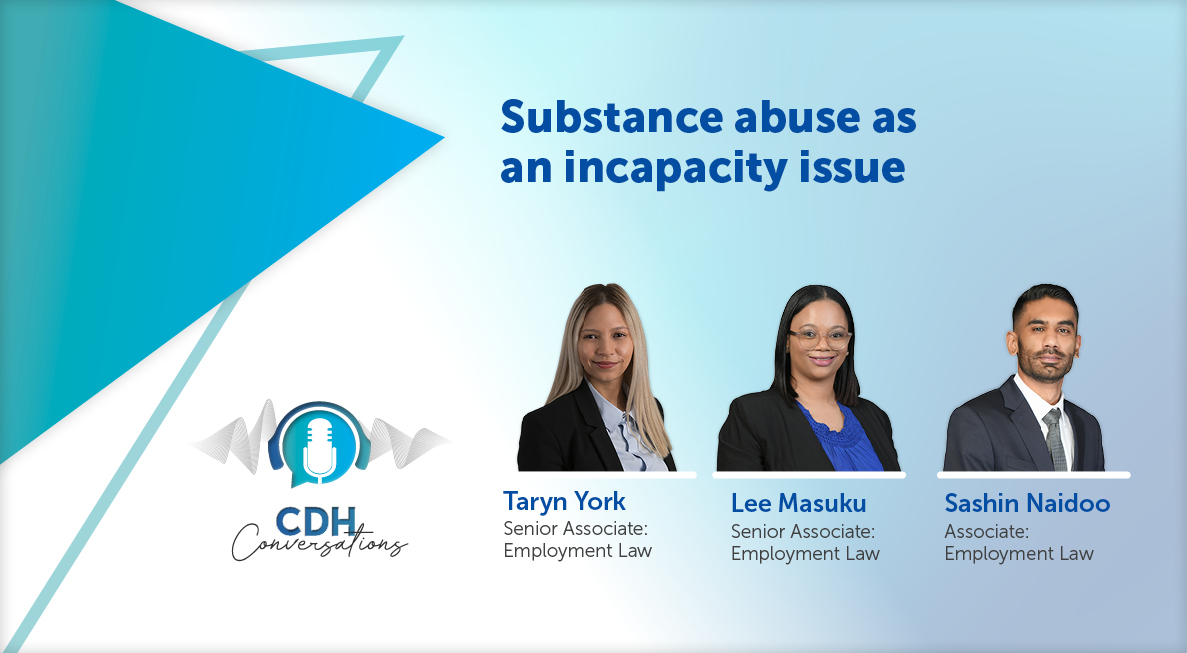Ready for Margin – a closer look at the final SA Rules
- In-Scope Instruments and exclusions
Certain margin requirements apply to all non-centrally cleared OTC derivatives transactions, including cross-border transactions and intra-group transactions after application of the thresholds discussed below. Physically settled foreign exchange forward contracts and foreign exchange swaps do not require initial margin (IM) or Variation Margin (VM). Cross currency swaps where any fixed physically settled foreign exchange transaction is associated with the exchange of principal, is not subject to IM, but is subject to VM. All other payments or cash flows, including interest, that occur during the life of the cross-currency swap are subject to IM. Margin requirements do not apply to transactions such as repurchase agreements and securities lending transactions that are not derivatives, but which share some attributes with derivatives.
According to the Joint Standard, margin requirements do not apply to existing derivatives contracts up to the relevant phasing in date (discussed in paragraph 10 below), provided that bona fide amendments to existing contracts will not be regarded as new derivatives contracts. Any amendment intended to extend a contract to avoid margin requirements will be considered a new contract.
- In-Scope Entities
Margin requirements apply to a “provider” when entering into non-centrally cleared OTC derivative transactions with a “counterparty” or a “foreign counterparty”. A “provider” is an authorised OTC derivative provider as defined in the Regulations to the Financial Markets Act, 2012 (FMA), which is a person who, as a regular feature of its business and transacting as principal, originates issues or sells OTC derivatives or makes a market in OTC derivatives.
A “counterparty” is any of the following:
a) an authorised user as defined in the FMA;
b) a bank, bank controlling company or branch as defined in terms of the Banks Act, 1990;
c) a financial services provider authorised to provide financial services in derivative instruments as contemplated in FAIS;
d) an insurer licenced or deemed to be licensed to conduct life insurance business in terms of the Insurance Act, 2017;
e) an insurer licenced or deemed to be licensed to conduct non-life insurance business in terms of the Insurance Act, 2017;
f) an investment fund;
g) a provider; and
h) any other person declared by the FSCA, with the concurrence of the PA, to be a counterparty.
An “investment fund” includes a portfolio of a collective investment scheme managed by a manager registered in terms of the Collective Investment Schemes Control Act, 2002 (Act 45 of 2002) and a private equity fund.
A “foreign counterparty” is a person outside the Republic of South Africa who (a) is authorised by a supervisory authority to perform a service or services similar to one or more of the services referred to in the definition of a provider or the services performed by an authorised user; or (b) is registered, licensed, recognised, approved or otherwise authorised to conduct the business of a bank or of an institution referred to in (d), (e) and (f) of the definition of counterparty by a supervisory authority with functions similar to those of the FSCA or the PA referred to in the legislation listed in paragraph (b), (d) or (e) of the definition of counterparty or the Collective Investment Schemes Control Act, 2002.
All providers and counterparties are in scope despite the size of the particular entity’s derivatives book (no threshold has been set to distinguish systemically and non-systemically important entities).
- Out of Scope Entities
Margin requirements do not apply to sovereigns, central banks, multilateral development banks, the Bank for International Settlements. Margin requirements also do not apply to indirectly cleared OTC derivative transactions that are intermediated through a clearing member on behalf of a non-member client if that non-member client is subject to the margin requirements of the relevant clearing house or if that non-member client provides margin consistent with the requirements of the relevant corresponding clearing house.
- Margin Thresholds
The Bilateral Threshold - requirement to calculate and exchange the IM threshold is capped at R500 million, which amount must be the aggregate amount of all relevant transactions in non-centrally cleared OTC derivatives between the provider and its holding companies on a consolidated basis and the relevant consolidated counterparty group. Investment funds must be regarded as distinct entities when applying the threshold amount provided it is proven that the investment fund is a distinct legal entity not collateralised, guaranteed or supported by another investment fund in the event of insolvency. Where IM to be exchanged is less than R500 million, the provider may at its discretion decide whether to collect IM. If equal or greater than R500 million, the provider must at least collect difference between the required IM and R500 million, or such higher amount as the provider decides.
The De Minimis Threshold for IM – after the phase in period (i.e. from 1 September 2024 onwards), any provider or counterparty belonging to a group of which the aggregate month-end average gross notional amount of OTC derivatives (including any physically settled foreign exchange forwards and swaps) for March, April and May of the year is less than R100 billion will not be subject to IM.
The Minimum Transfer Amount (MTA) – Any required transfer of IM and VM may be subject to a minimum transfer amount not exceeding R5 million.
- Calculation Methodologies
IM – Parties may use a model method or the standardised approach to calculate IM but may not switch between approaches within a particular class of derivatives.
5.1 Model Method – Providers must obtain prior written approval of the PA, in concurrence with FSCA, for use of the model method. This model may be developed internally or sourced from third party vendors. The model must calculate estimate of increase in value of instrument that is consistent with a one-tailed 99% confidence interval over a 10-day horizon, based on historical data of not more than 5 years that incorporates a period of significant financial stress. 10-day horizon only applies when VM is exchanged daily. If VM is exchanged less frequently, the minimum horizon must be equal to 10 days plus number of days between VM exchanges. The model must be subject to robust internal governance processes that continually assess the model and the model must calculate IM for derivatives in distinct asset classes without regard to other asset classes. The model should comply with all other requirements in section 4.6 of the Joint Standard if applicable.
5.2 Standardised Approach – Calculated as a percentage (1% – 15% depending on asset class) of the notional exposure of the individual derivative transactions with adjustment related to net-to-gross ratio (NGR) pertaining to all derivatives in a netting set, according to the prescribed formula set out in the table to the Joint Standard.
5.3 Collection of IM – IM must be provided and collected within one business day after the execution of a non-centrally cleared OTC derivative. Thereafter IM must be collected on a routine and consistent basis upon changes in measured potential future exposure.
VM – The VM necessary to fully collateralise market-to-market exposure must be calculated and exchanged daily. After the phase-in of VM (i.e. six months after the effective date) all providers that transact in non-centrally cleared OTC derivatives with a counterparty must exchange VM on all new contracts.
Netting – The Provider is required to have robust processes, procedures and board-approved policies to ensure that, subject to non-netting jurisdictions detailed at paragraph 7 below, all relevant netting agreements are effective under the laws of the relevant jurisdictions.
- Eligible Collateral
For either IM or VM, eligible collateral includes:
6.1 cash;
6.2 gold;
6.3 high-quality government and central bank debt securities specified in writing by the PA and the FSCA;
6.4 high-quality corporate bonds specified in writing by the PA and the FSCA;
6.5 equities included in major indices as may be specified in writing by the PA and the FSCA; and
6.6 such other assets or instruments as may be specified in writing by the PA and the FSCA.
Collateral can be denominated in the currency of the payment obligations of a particular derivative transaction, or in highly liquid foreign currencies. Provider’s portfolio of collateral for both IM and VM must be reasonably diversified in terms of issuer, issuer type, asset type and instrument type. Collateral must not be exposed to excessive credit, market or foreign exchange risk.
Haircuts discounts on collateral – Providers may use a model method or the schedule to the Joint Standard to calculate appropriate haircuts on collateral, but may not switch between approaches in respect of collateral within a particular class of derivatives. Providers must apply appropriately conservative haircuts to collateral to reflect any inherent foreign exchange risk. The provider must in all cases apply to the value of collateral the higher of the haircut specified in writing by the PA and the FSCA or as is determined by the provider using the model or schedule.
a) Model method for Haircuts – Providers must obtain prior written approval of PA in concurrence with FSCA. The model must as a minimum determine haircuts that are risk-based and appropriately calibrated to reflect all material underlying risks that affect value of collateral, during both normal and stressed market conditions. The model must be sufficiently conservative to avoid procyclicality. The model must be subject to robust internal governance processes that continually assess the model.
b) Standardised Haircut Schedule – Providers must apply to the relevant market value of the collateral the relevant standardised haircut percentages as set out in the Joint Standard. Haircut percentages vary from 0% (for cash in same currency) to 15% for equities included in major stock indices and for gold. Additional (additive) 8% haircut applies to an asset in which the currency of the derivative obligations differs from that of the collateral asset.
7. Treatment of Collateral
Collected IM must be treated as the IM provider’s asset and must be segregated from the IM collector’s assets, until rehypothecated, where-after the third party must segregate the IM from the third party’s assets. The IM collector must give the IM provider the option to segregate its collateral from the assets of all the IM collector’s other customers and counterparties (individual segregation).
IM must be held in such a way that it is “immediately available” to the IM collector in the event of the IM provider’s default. The IM must be subject to arrangements that fully protect the IM provider, to the extent possible, upon insolvency of the IM collector. Any cash or non-cash collateral collected as IM may by rehypothecated, re-pledged or re-used only once by the IM collector, and only for the purposes of hedging the IM collector’s derivatives position arising from the transactions for which the IM was collected. The transaction agreements must protect the IM provider’s rights in the collateral.
The third party may not rehypothecate, re-pledge or re-use the IM. This prohibition must be recorded in the agreement between the IM collector and the third party. The third party and the IM provider may not be within the same group of companies. The IM provider has a right not to permit the collateral to be rehypothecated, re-pledged or re-used. The IM provider must be warned of the insolvency risks, and must expressly consent in writing to the re-hypothecation, re-pledge or re-use of the IM.
VM may be rehypothecated. A counterparty that has posted collateral to satisfy margin requirements before the end of the derivatives contract can request that the collateral be returned and provide substitute or alternative collateral if both parties agree to the substitution, the substitution is made on the terms of the original agreement, the alternative collateral meets the necessary legal requirements and the value of the alternative collateral, after any relevant haircut is sufficient to meet the margin requirement.
- Inter-group trades
Margin requirements do not apply to derivatives between a provider and a counterparty or a foreign counterparty in the same group of companies provided that the aggregate outstanding gross notional amount of the non-centrally cleared OTC derivatives between the provider and the counterparty is below R100 billion at the close of business on each relevant day. Both the provider and the counterparty must be subject to appropriate centralised risk evaluation, measurement and control procedures, and the risk management procedures must be adequately sound, robust and consistent with the level of complexity of the transactions.
The parties may be required to comply with further conditions specified by the FSCA and the PA in writing. If deemed appropriate the FSCA and the PA may require that a provider and a counterparty to exchange VM or collect IM, notwithstanding that they are in the same group of companies.
- Cross-border trades with foreign counterparties
Where a provider enters into a non-centrally cleared OTC derivative with a foreign counterparty, the provider will be deemed to comply with the margin requirements if the provider has documentary evidence to satisfy itself that:
a) the foreign counterparty’s jurisdiction has implemented margin requirements based on the BCBS-IOSCO principles;
b) the foreign counterparty is directly subject to such margin requirements; and
c) the provider is required to comply with such margin requirements in the foreign jurisdiction.
Where the foreign counterparty’s jurisdiction does not permit or recognise the enforceability of a netting agreement upon insolvency of the counterparty or the enforceability of a collateral agreement upon the default of the counterparty (i.e. a non-netting jurisdiction), the provider is not required to post or collect IM or exchange VM if the aggregate outstanding gross notional amount of transactions between the provider and such foreign counterparty does not exceed 2.5% of the total portfolio of derivatives of the provider and its group and a legal opinion confirms that the netting agreement or exchange of collateral is not legally enforceable at all times. Should the amount exceed 2.5% the provider must obtain written approval of the FSCA acting in concurrence with the PA to proceed with any further transactions.
- Compliance timing
Compliance will be phased-in. The Effective Date will be determined by the FSCA and PA, however such Effective Date has not been proclaimed to date. We hope that the Effective Date is proclaimed with a sufficient lead time ahead of the proposed phase-in dates listed below, set to commence as early as 31 August 2021.
VM –
From the effective date, any provider belonging to a group of which the aggregate month-end average gross notional amount of OTC derivative instruments for March, April and May 2020 exceeded R30 trillion and who is transacting with a counterparty who also exceeded the R30 trillion threshold must exchange VM in accordance with the Joint Standard. Then, six months after the effective date, all providers entering into derivative contracts with counterparties must exchange VM in accordance with the Joint Standard. VM only applies to new contracts. For all other relevant contracts, the exchange of VM is by bilateral agreement.
IM –
a) From the effective date to 31 August 2021: IM obligations apply to any provider belonging to a group of which the aggregate month-end average gross notional amount of OTC derivative instruments for March, April and May 2020 exceeded R30 trillion and who is transacting with a counterparty who also exceeded the R30 trillion threshold.
b) From 1 September 2021 to 31 August 2022: IM obligations apply to any provider belonging to a group of which the aggregate month-end average gross notional amount of OTC derivative instruments for March, April and May 2021 exceeded R23 trillion and who is transacting with a counterparty who also exceeded the R23 trillion threshold.
c) From 1 September 2022 to 31 August 2023: IM obligations apply to any provider belonging to a group of which the aggregate month-end average gross notional amount of OTC derivative instruments for March, April and May 2022 exceeded R15 trillion and who is transacting with a counterparty who also exceeded the R15 trillion threshold.
d) From 1 September 2023 to 31 August 2024: IM obligations apply to any provider belonging to a group of which the aggregate month-end average gross notional amount of OTC derivative instruments for March, April and May 2023 exceeded R8 trillion and who is transacting with a counterparty who also exceeded the R8 trillion threshold.
e) From 1 September 2024: IM obligations apply to any provider belonging to a group of which the aggregate month-end average gross notional amount of OTC derivative instruments for March, April and May 2023 exceeded R100 billion and who is transacting with a counterparty who also exceeded the R100 billion threshold.
- Required netting opinions
Subject to the requirements applicable in respect of non-netting jurisdictions outlined at paragraph 7 above, providers must ensure that all relevant netting agreements are effective under the laws of the relevant jurisdictions and are supported by periodically updated legal opinions. Subject to the requirements applicable in respect of non-netting jurisdictions outlined at paragraph 7 above, providers must ensure that all relevant collateral agreements are effective under the relevant laws and are supported by periodically updated legal opinions.
In non-netting jurisdictions, where a legal opinion is required to confirm that the netting agreement or the exchange of collateral is not legally enforceable at all times, such legal opinion must be in writing and must be obtained from external legal counsel. The legal opinion may include jurisdictional opinions on an industry-wide basis by recognised industry associations from external independent legal counsel (for example, the industry opinions provided by Cliffe Dekker Hofmeyr Inc. to the International Swaps and Derivatives Association Inc.). Providers must have rigorous and robust dispute resolution procedures with the relevant counterparties, before the onset of any transaction. At a minimum, the provider must ensure, in order to reduce the risk of any potential dispute, that the specific method and parameters that will be used to calculate IM are agreed and recorded.
Whenever a margin dispute or a dispute over the value of eligible collateral arises, the provider must make all necessary, reasonable and appropriate efforts, including timely initiation of dispute resolution protocols, to resolve the dispute.
- Readiness and gap analysis
For now, it is advisable that all providers to whom the Joint Standard will apply proceed to take steps to conduct a gap analysis and ensure that they are prepared to comply with the Joint Standard once the Effective Date is determined by the FSCA and PA. This could include updating margin agreements with in-scope counterparties and foreign counterparties (such as the ISDA credit support documents) and engaging with third party custodians to the extent required to achieve segregation of IM collected when the Joint Standard becomes effective.
We will publish a follow-up alert as soon as the Effective Date of the Joint Standard is proclaimed.
The information and material published on this website is provided for general purposes only and does not constitute legal advice. We make every effort to ensure that the content is updated regularly and to offer the most current and accurate information. Please consult one of our lawyers on any specific legal problem or matter. We accept no responsibility for any loss or damage, whether direct or consequential, which may arise from reliance on the information contained in these pages. Please refer to our full terms and conditions. Copyright © 2025 Cliffe Dekker Hofmeyr. All rights reserved. For permission to reproduce an article or publication, please contact us cliffedekkerhofmeyr@cdhlegal.com.
Subscribe
We support our clients’ strategic and operational needs by offering innovative, integrated and high quality thought leadership. To stay up to date on the latest legal developments that may potentially impact your business, subscribe to our alerts, seminar and webinar invitations.
Subscribe




